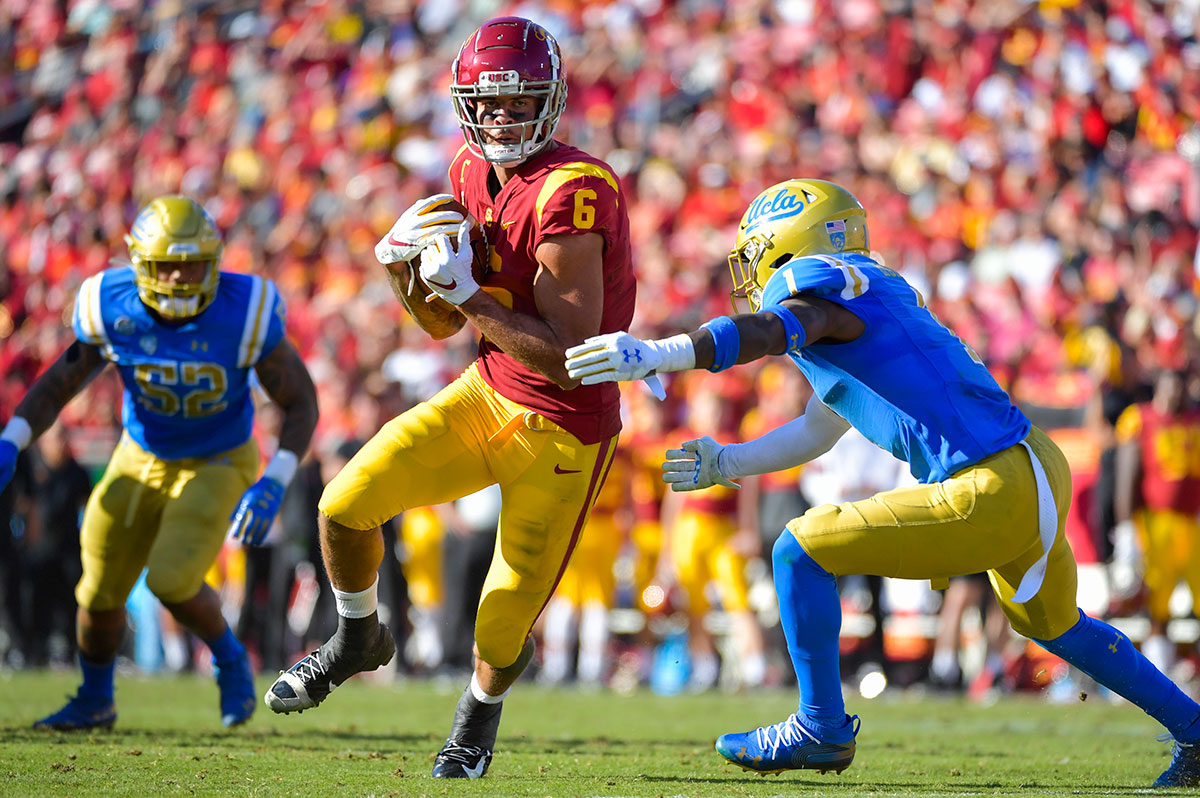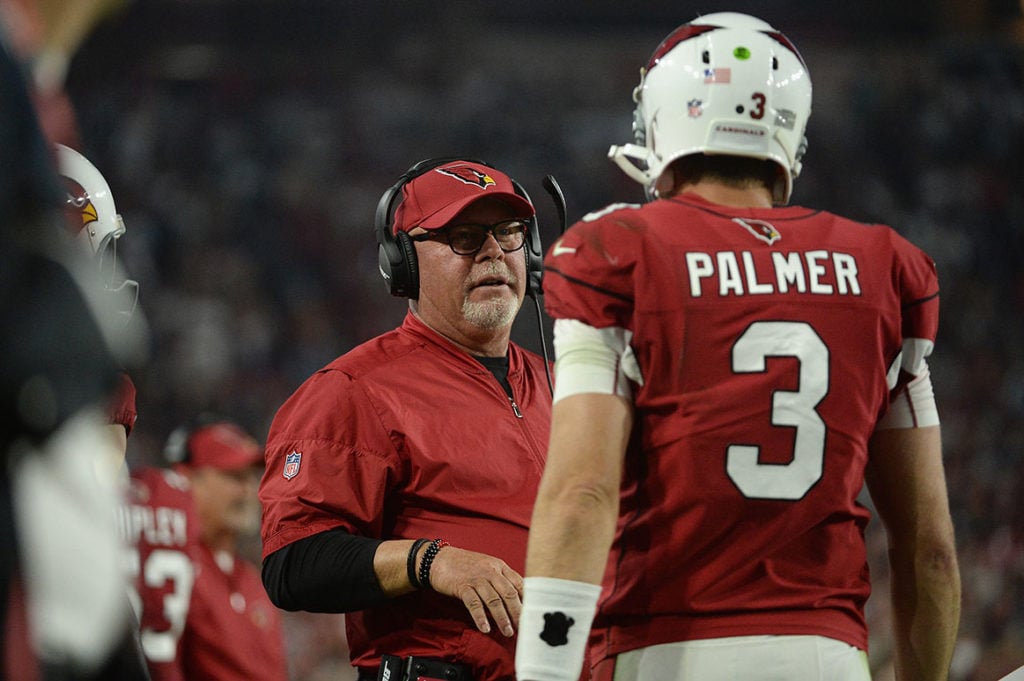If you haven’t already, make sure you get a subscription to The Athletic and check out Arif Hasan’s work on putting together the annual consensus NFL Draft Big Board, with input from over 54 evaluators’ work. It’s one of the best pieces of content to emerge from the offseason every year.
Compared to this consensus board, my final Big Board (dropping on Thursday morning right here on PewterReport.com) is much higher on several prospects than the combined ranking of most other evaluators in the field. I’ve pulled six of the most egregious discrepancies between my board and consensus, detailing why I’ve reached my conclusions about each prospect.
Tune in for my final Big Board and positional rankings on Thursday morning!
Ashtyn Davis, S, California
The 13th overall prospect on my board, Davis was one of my favorite players to scout this past season. He’ll be 24 as a rookie, so there’s some concern there, but his tape already shows a dominant single-high free safety with the anticipation, ball skills and athleticism to shine there at the next level. Davis can also step into the slot and match up with bigger receiver, hailing on his cornerback experience in man coverage. Davis couldn’t work out at the NFL Scouting Combine due to surgery to repair a torn abductor muscle in his lower torso.

Cal FS Ashtyn Davis – Photo courtesy of Cal
When you can cover at a high level and you have the athleticism to translate those abilities to the NFL, you’ve already checked two of the biggest boxes for the safety position. Davis also loves football, is a tape junkie and isn’t a slouch in run support. He’ll miss some tackles, but all safeties do, especially in this class. He’ll be a steal on Day 2.
Bryan Edwards, WR, South Carolina
There is definitely a risk going with two injured guys to start this list, but I don’t think Davis or Edwards’ injuries are expected to hamper them long-term. Also, I don’t factor injuries into my evaluations, as I am not a doctor and don’t have access to the medical info I’d need to impact grades for each player.
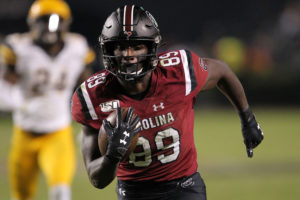
South Carolina WR Bryan Edwards – Photo courtesy of South Carolina
On the field, Edwards is a better athlete than given credit for, showing the ability to consistently separate against man coverage in his route tree. Yes, much of his production came off of screens this past season, but that’s largely because the quarterbacks he played with couldn’t put the ball in his zip code past 5-10 yards.
Edwards can stand to become a bit more consistent, but he has the ability to win above the rim, after the catch and before the ball arrives as a route runner. When you can impact all three levels of the field as a receiver, typically success will find you at the next level. Edwards’ ability to play outside or in the slot should only add to his value as a rookie, helping him get on the field sooner rather than later. A broken foot in February while training for the Combine could cause his stock to drop to the middle rounds, where he could be one of the steals of the draft.
A.J. Terrell, CB, Clemson
Everyone wants to get on Terrell for the national championship game performance, but LSU wide receiver Ja’Marr Chase is a Top 5-10 pick next season and the Tigers asked Terrell to match up with him in man coverage on an island most of the game. Most college corners will get beat up a little in those situations, and Terrell honestly won more reps than he lost. The ones he lost resulted in touchdowns, though.
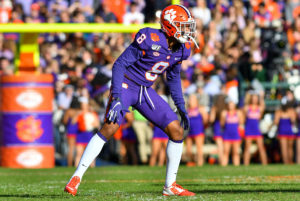
Clemson CB A.J. Terrell – Photo courtesy of Clemson
The bottom line with Terrell is that the good Lord only makes so many cornerbacks that size (6-1, 195) who can move as fluidly as he does. There is room to improve, namely in terms of finding the football in the air and processing routes in zone coverage, but Terrell has the work ethic and athletic traits you bet on at the position. Stick him in a press-man scheme and I think you’ll be really pleased with the results by his third season.
Michael Pittman, WR, USC
I love the Vincent Jackson comparison that Fourth and Nine analyst Eric Crocker gave Pittman, as the USC receiver consistently wins in the vertical game despite not being the most explosive receiver off the line of scrimmage. Pittman’s calling card is his route-running and ball skills, which are two of the biggest boxes to check in order to get on the field early as a rookie.

USC WR Michael Pittman – Photo courtesy of USC
But Pittman’s Combine revealed a better athlete than most expected, and I think the tape backs it up. He’s an outstanding possession receiver who should work his way into a starting lineup quickly, but he also gives you something extra beyond that role because of his ability to track and finish on the ball down the field. Pittman might never be a star in the NFL, but he’ll be a quality starter for a long time, and there is a lot of value in finding that type of player in the Top 50 picks of the draft.
Terrell Burgess, CB/S, Utah
Burgess may be resigned to the nickel position in the NFL, but it won’t be because of anything he did wrong on tape. The Utah slot defender has some of the best tape of any player in the 2020 class, locking down everybody he faced in man coverage and consistently making high degree of difficulty plays on the ball when aligned deep.
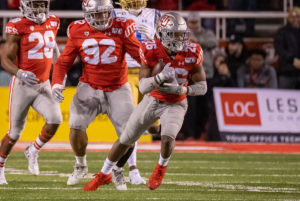
Utah DB Terrell Burgess – Photo courtesy of Utah
At 5-foot-11, 202 pounds with sub-30 inch arms, the league will likely see Burgess as a slot only, but even in that role he’s extremely valuable because he’s not only outstanding in his technique, route recognition and ability to find the football in man coverage. But he also is a willing tackler who supports the run extremely well. If he had started more than one season and was a little bigger, we’d be talking about him as a much higher selection than he’ll likely be on the second day of the draft.
Clyde Edwards-Helaire, RB, LSU
When I said on Twitter that Edwards-Helaire was my RB1, I was a little surprised at some of the negative responses. Why shouldn’t he be in consideration to be the top back in the class? Because he’s short and runs 4.6-flat? We have ample evidence that neither of those results move the needle much at the running back position.
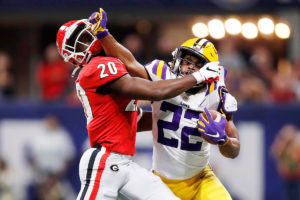
LSU RB Clyde Edwards-Helaire – Photo by: Getty Images
What does matter is how often Edwards-Helaire makes defenders miss, either by juking them out in the open field or running through their tackle attempt in tight quarters. That’s arguably the most valuable trait a running back can offer at the NFL level, perhaps only second to receiving ability, another area where Edwards-Helaire’s resume is spotless. LSU let him run routes from all alignments, where he consistently showed the ability to separate, catch the football and pick up chunks of extra yardage after the catch.
Add to all of that Edwards-Helaire’s outstanding vision as a runner and ability to create when it’s not blocked well up front, and you have the entire package of what is a valuable in a running back. Argue about his positional value all you want, but I think he’ll have the best career of any of the top backs in the class.
Jon Ledyard is PewterReport.com's newest Bucs beat writer and has experience covering the Pittsburgh Steelers as a beat writer and analyzing the NFL Draft for several draft websites, including The Draft Network. Follow Ledyard on Twitter at @LedyardNFLDraft

